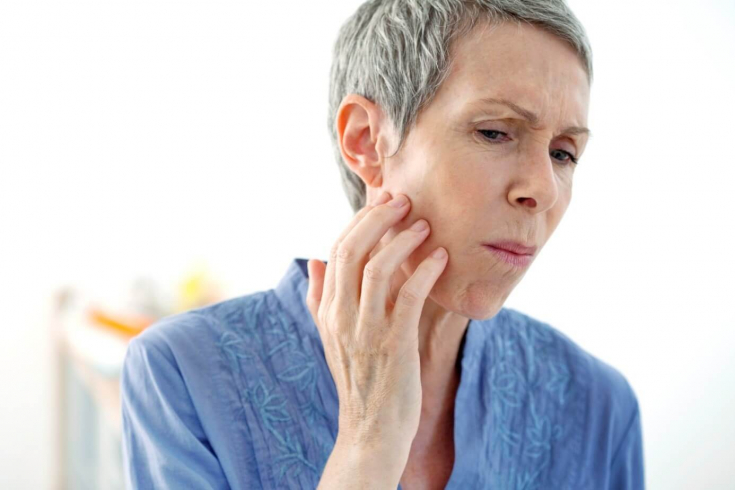In our previous article, we considered the causes and clinical manifestations of actinomycotic inflammation of the salivary glands.
In this article on estet-portal.com you can learn about possible complications of sialadenitis, diagnostic methods and topical treatments salivary glands.
- Dangerous complications of actinomycosis of the salivary glands
- Basic diagnostic procedures before salivary gland treatment
- Topical treatments for salivary jelly3
Dangerous complications of actinomycosis of the salivary glands
During sialoadenitis, pathogenic bacteria in the presence of an inflammatory process can spread by hematogenous or lymphogenous routes.
In this case, generalization of actinomycosis occurs with damage to other organs (brain, organs of the chest cavity). When the brain and meninges are affected by actinomycetes, an extremely serious condition develops, which often ends unfavorably.
Also dangerous is the location of actinomycotic foci in the temporal region, parapharyngeal space and in the lateral parts of the neck.
If the salivary glands are not treated for an actinomycotic process for a long time, then the risk of developing amyloidosis of the internal organs increases.
Inflammation of the salivary glands of an actinomycotic nature is a rather complex disease from the standpoint of and diagnostics and often requires different studies.
Diagnostic procedures before treatment of salivary glands
1. Clinical blood test.
In an acute process , lymphopenia, monocytopenia, leukocytosis and neutrophilia develop.
In the chronic form, leukocytes decrease, the leukocyte formula shifts to the left, ESR rises, there is secondary anemia.
2. Pathological diagnostics
When symptoms are similar to tumor growth, or productive actinomycosis is suspected, a biopsy specimen of the salivary gland.
In actinomycotic sialoadenitis, young granulation tissue is found, which consists of xanthoma and multinucleated cells, fibroblasts and epithelioid cells.

3. X-ray of the salivary glands.
During sialography, the main duct in the salivary gland is clearly contoured and narrowed.
In the glandular tissue itself there are formations of different sizes and shapes. These are abscess sites. The small ducts look empty, while the large ducts of the gland are dilated.
4. Skin allergy test with actinolysate.
To conduct this test, the patient is injected intradermally with 0.3 ml of an actinolysate solution, then, retreating approximately 10 cm, meat-peptide broth is injected.
The next day, the result and reaction are evaluated by the size of the erythema.
The sample can be strongly positive, positive, weakly positive, doubtful and negativeoh.
Colles of the mouth: etirology and treatment of angular cheilitis
Topical treatments for salivary glands
Treatment of the salivary gland depends on the form of inflammation in it, on the degree of spread and clinical course of actinomycotic sialadenitis.
In dental practice, the following methods of treatment of the salivary glands are used:
1. Antibacterial therapy.
Operated when a secondary infection joins. Before prescribing, it is necessary to determine the sensitivity of the pathogen.
In the treatment of actinomycosis nitrofuran antibiotics are effective. Antibiotic therapy is important for at least 10 days.
2. Specific immunotherapy.
For this, actinomycete vaccine and actinolysate.
The substance is injected intradermally into the inner surface of the forearm 2 times a week or intramuscularly.
The course of treatment includes 20-25 injections, which lasts up to 3 months.
At the end of such treatment of the salivary glands, a break is made, after which the course is repeated.
3. Surgical debridement.
Inflammatory foci are dissected and damaged tissues are removed. The wound is drained, scraped and treated.
In severe cases, there is a need for excision of the fistula, partial parotidectomy or removal of the submandibular salivary gland.
It is also important to remove persistent infection (e.g. carious teeth).
4. Detoxification treatment is carried out in the acute course of the disease, when intoxication is significantly expressed.
With the help of infusion therapy, hemodynamic parameters are corrected (intravenous administration of plasma-substituting colloidal solutions, serum albumin and electrolytes).
5. Stimulation therapy consists of physiotherapeutic procedures on the gland area - electrophoresis, laser therapy, UHF.
Also prescribed multivitamins to increase the body's resistance.
The prognosis for actinomycotic sialoadenitis is favorable, provided timely and correct treatment.
Already after the first course of treatment of the salivary glands, patients can return to work. Subsequent courses of immunotherapy can be done on an outpatient basis.
Patients are under dispensary observation of a maxillofacial surgeon for up to a year, since there is a high risk of recurrence of this pathology.
For prevention, it is necessary to sanitize all foci of infections in time, ranging from dental diseases to tonsilogenic and otogenic foci of infections.
It is also important to strengthen the immune system with a healthy lifestyle.
Read more of our articles on Facebook!







Add a comment